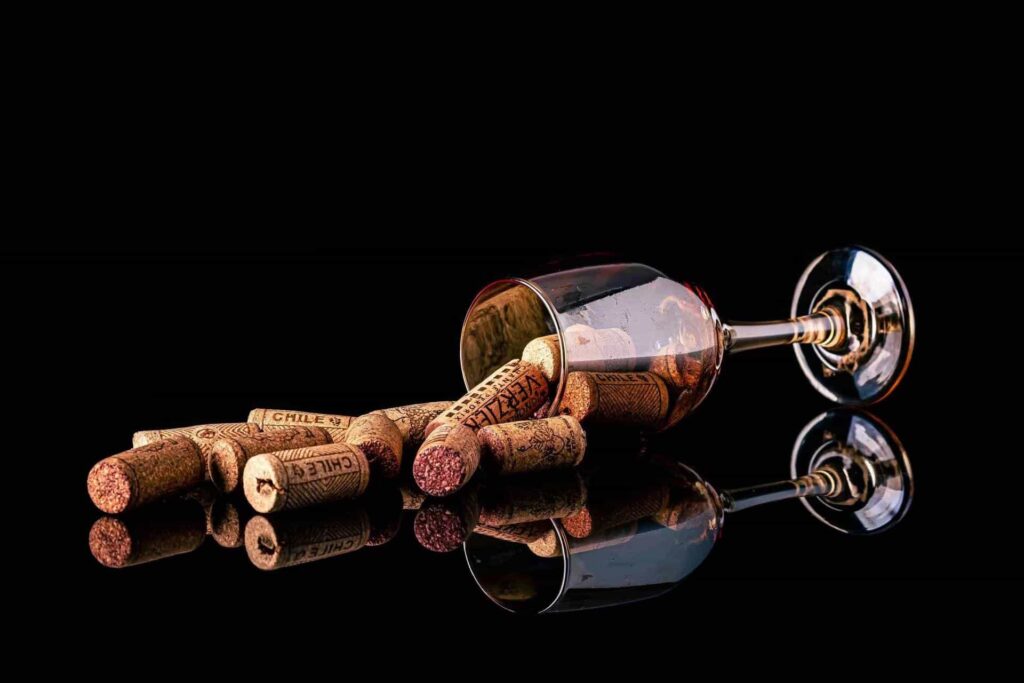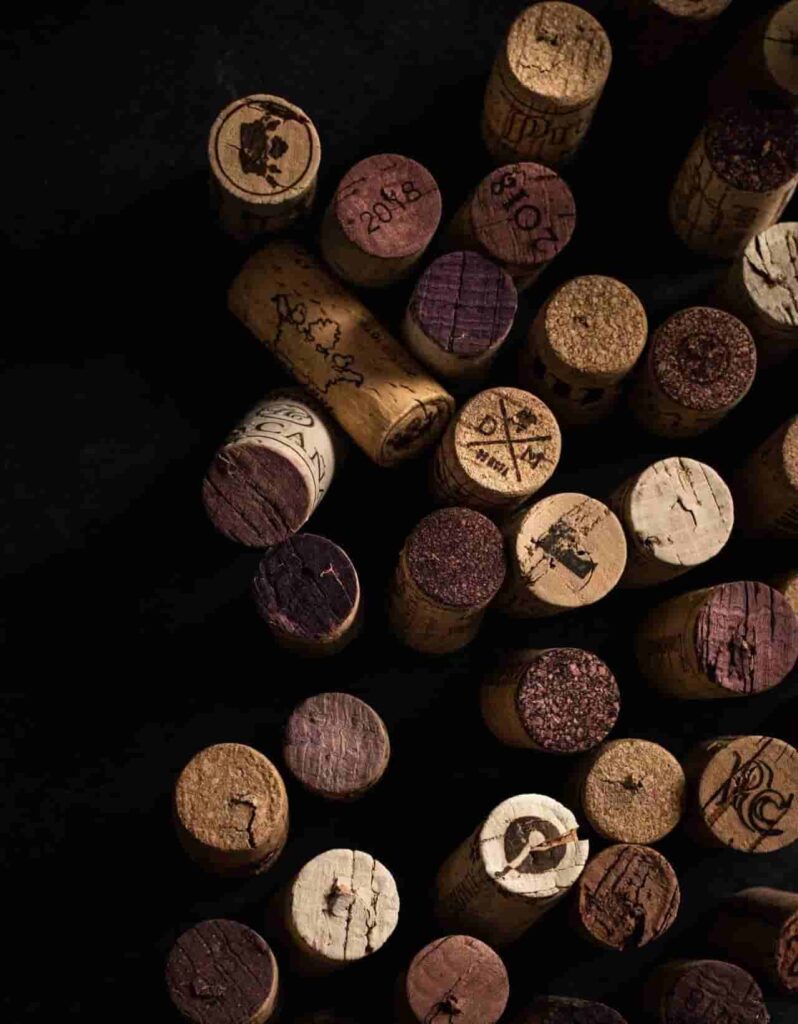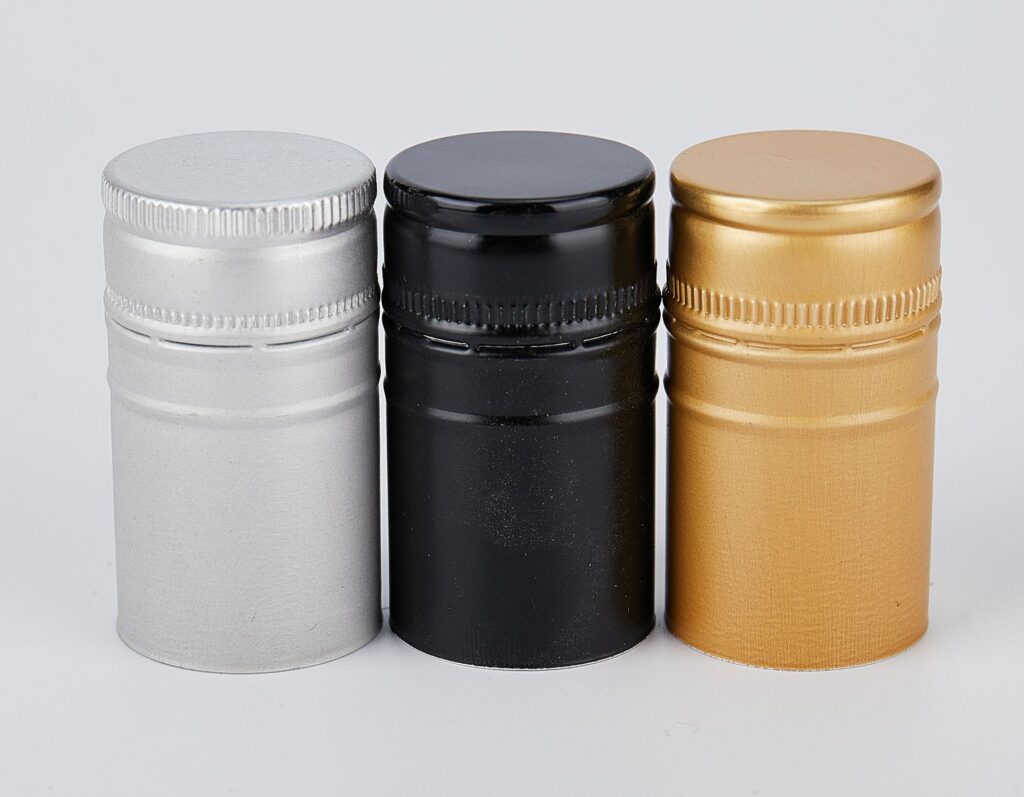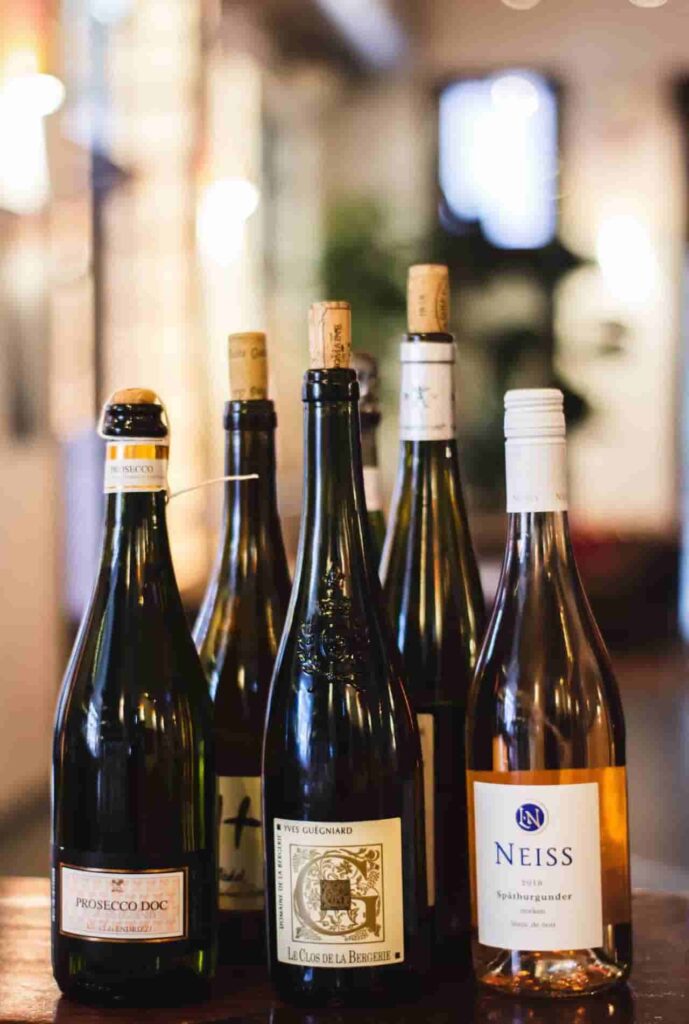In the world of wine packaging, the debate between corks and screw lids is a longstanding one. This article aims to provide a comprehensive comparison of these two closure types, focusing on their impact on wine quality, sustainability, cost-effectiveness, and market perception. Our audience, including buyers of wholesalers and retailers of empty glass bottles or jars, as well as purchasers and designers of wine brands, will find this analysis particularly useful for making informed decisions.
Section 1 The Traditional Elegance of Corks
1.1 History and Quality Perception
Corks have been synonymous with wine storage for centuries, with their usage dating back to the ancient Greeks and Romans. However, it was during the 17th century, with the advent of glass wine bottles used for wine storage, that corks became the standard closure. The ability of cork to compress and expand made it an ideal material for sealing the variable neck sizes of hand-blown glass bottles.
There’s a romanticism attached to cork closures in the wine world. The ritual of uncorking a bottle is often associated with the anticipation of a quality wine experience. This tradition has imbued corks with a perception of quality and elegance that is deeply ingrained in wine culture.
Corks are often perceived as a hallmark of high-quality wines. This perception stems from their historical association with fine wines that require aging. The natural breathability of cork, allowing a minute amount of oxygen to interact with the wine, is crucial in the aging process, enabling the wine to develop complexity and depth over time.

1.2 Environmental Impact of Corks
▶ The Sustainable Nature of Cork Harvesting
Cork is harvested from the bark of the cork oak tree (Quercus suber), predominantly found in the Mediterranean region, with Portugal being the leading producer. The process of harvesting cork is remarkably sustainable. The cork oak is not cut down; instead, its bark is carefully stripped away by skilled workers, a process that does no harm to the tree. In fact, a harvested cork oak absorbs more CO2 as it regenerates its bark, making cork production carbon-negative in many cases.
▶ Regeneration and Biodiversity
A cork oak tree can live up to 200 years, with the harvesting cycle occurring every nine to twelve years. This longevity and the cyclic nature of harvest ensure a constant renewal, with minimal impact on the ecosystem. The cork oak forests, known as montados in Portugal and dehesas in Spain, are biodiversity hotspots, supporting a wide range of wildlife, including endangered species like the Iberian lynx and the Iberian imperial eagle.
▶ Biodegradability and Recycling
Cork is 100% natural, biodegradable, and recyclable. Unlike synthetic closures, used corks can be repurposed into a variety of products, from flooring tiles to sports equipment. This recyclability adds to the cork’s environmental credentials. Several recycling programs worldwide encourage consumers to recycle their wine corks, further minimizing waste.
1.3 Challenges with Corks
▶ Variability and Quality Control
One of the primary challenges with natural cork stoppers is their variability. Being a natural product, each cork can have different physical properties, leading to inconsistency in performance. This variability can affect the seal of the bottle, potentially impacting the wine’s aging process and, in some cases, leading to spoilage due to oxidation or leakage.
▶ Cork Taint (TCA Contamination)
Cork taint, primarily caused by the chemical compound 2,4,6-trichloroanisole (TCA), is a significant issue associated with natural corks. TCA can develop in cork due to the presence of certain fungi and chlorinated compounds used in bleaching or sanitation processes. Even in minute concentrations, TCA can impart an unpleasant musty odor and taste to the wine, affecting its quality. The wine industry has made significant efforts to reduce TCA contamination, but it remains a concern.
▶ Impact on Wine’s Integrity
The inconsistency in the porosity and density of natural corks can sometimes result in an uneven aging process for wines. Some corks may allow too much oxygen to enter the bottle, leading to premature oxidation, while others may be too tight, hindering the wine’s natural development.

Section 2 The Rise of Screw Lids
2.1 Innovation and Consistency
Screw lids, introduced in the 20th century, marked a significant innovation in wine packaging. Initially developed to address the challenges of natural corks, such as cork taint and variability, screw lids have rapidly evolved. Today, they are admired for their consistency and practicality.
Modern screw lids are the result of significant technological advancements. They are designed to provide an airtight seal, ensuring that the wine’s exposure to oxygen is precisely controlled. This consistency is particularly beneficial for wines not intended for long-term aging, as it maintains their freshness and flavor profile.
Unlike corks, screw lids eliminate the risk of cork taint and bottle variation. They maintain the integrity of the wine from the bottling line to the consumer’s glass. This reliability is a crucial factor in preserving the wine’s intended taste, aroma, and quality over time.
2.2 Sustainability and Cost
▶ Environmental Considerations
While initially viewed as less environmentally friendly due to their metal and plastic components, screw lids have made strides in sustainability. Many are now made from recyclable materials, and the industry is increasingly focusing on reducing the environmental impact of production and disposal.
▶ Cost-Effectiveness
Screw lids offer a cost-effective solution for wine sealing. They are generally less expensive to produce than natural corks and require less labor-intensive processes. This cost-saving aspect is particularly appealing for large-scale production and value-oriented wine brands.
▶ Energy Efficiency
The production and recycling processes of screw lids are becoming more energy-efficient, further enhancing their sustainability profile. This efficiency is an important consideration for environmentally conscious producers and consumers.
2.3 Market Acceptance
▶ Shifting Perceptions
Initially, screw lids were met with skepticism, particularly in traditional wine markets, where they were perceived as indicative of lower-quality wines. However, this perception has shifted dramatically over the past few decades.
Countries like Australia and New Zealand have been pioneers in adopting screw lids, with a significant portion of their wines now using this closure. This acceptance has influenced other markets, with many winemakers globally recognizing the practical and quality benefits of screw lids.
▶ Consumer Preferences
Consumer preferences are evolving, with a growing appreciation for the convenience and reliability of screw lids. Younger wine consumers, in particular, are less influenced by traditional notions of wine packaging and more open to innovations that offer practicality and quality assurance.
Even in the realm of premium wines, there’s a growing acceptance of screw lids. Winemakers are increasingly using them for high-quality wines, challenging the notion that screw lids are only suitable for lower-tier wines.

Section 3 Comparative Analysis: Corks vs. Screw Lids
▶ Impact on Wine Quality
Corks: Corks are known for their ability to allow a small amount of oxygen to interact with wine, which can be beneficial for aging wines, helping them to develop complexity. However, the natural variability of corks can lead to inconsistent aging and risks like cork taint.
Screw Lids: Screw lids provide a consistent and tight seal, protecting the wine from oxidation and contamination. They are ideal for wines meant to be consumed young, preserving the intended flavor profile and freshness.
▶ Environmental Impact
Corks: Corks are a sustainable choice, as they are biodegradable and harvested from a renewable source. Cork oak forests contribute to biodiversity and carbon sequestration. The challenge is ensuring sustainable forest management.
Screw Lids: Modern screw lids are increasingly made from recyclable materials, reducing their environmental impact. The production process is becoming more energy-efficient, although the initial environmental footprint was a concern.
▶ Cost and Economic Considerations
Corks: The production of natural corks can be more expensive due to manual harvesting and the need for quality control to minimize defects like TCA. This cost is often reflected in the final price of the wine.
Screw Lids: Screw lids are generally more cost-effective, both in terms of production and labor costs. This affordability makes them a popular choice for large-scale and value-oriented wine productions.
▶ Market Acceptance and Consumer Preferences
Corks: Corks are traditionally associated with high-quality wines and are preferred by consumers who value tradition and the aging potential of wine. However, issues like cork taint have affected their perception.
Screw Lids: Initially facing resistance, screw lids have gained acceptance, especially among younger consumers and in markets valuing innovation. They are now widely used for a variety of wine qualities, including premium wines.
▶ Branding and Presentation
Corks: The use of corks often conveys a sense of tradition, quality, and premium branding. The ritual of uncorking a bottle is seen as part of the wine experience.
Screw Lids: Screw lids offer a modern, practical, and user-friendly option. While initially perceived as less elegant, this perception is changing as more premium wines adopt screw lids.

Conclusion: Balancing Tradition and Innovation
In the dynamic world of wine packaging, the choice between corks and screw lids represents a balance between tradition and innovation. Corks carry the charm of history and natural quality, essential for wines meant to age. Conversely, screw lids symbolize modern efficiency, preserving the integrity of wines designed for immediate consumption. Ultimately, the decision hinges on the wine’s character, market positioning, and consumer expectations. As the industry evolves, both corks and screw lids have their unique roles, catering to diverse preferences and needs.
For those in the business of wine packaging, exploring these options is crucial. If you’re looking for high-quality glass bottles and jars to complement your choice of closure, contact Smilebottles. Our extensive range of products is designed to meet the diverse needs of the wine industry, blending aesthetic appeal with practicality. Visit our website and reach out to us directly to discover how we can enhance your wine packaging solutions, embracing both tradition and innovation.










